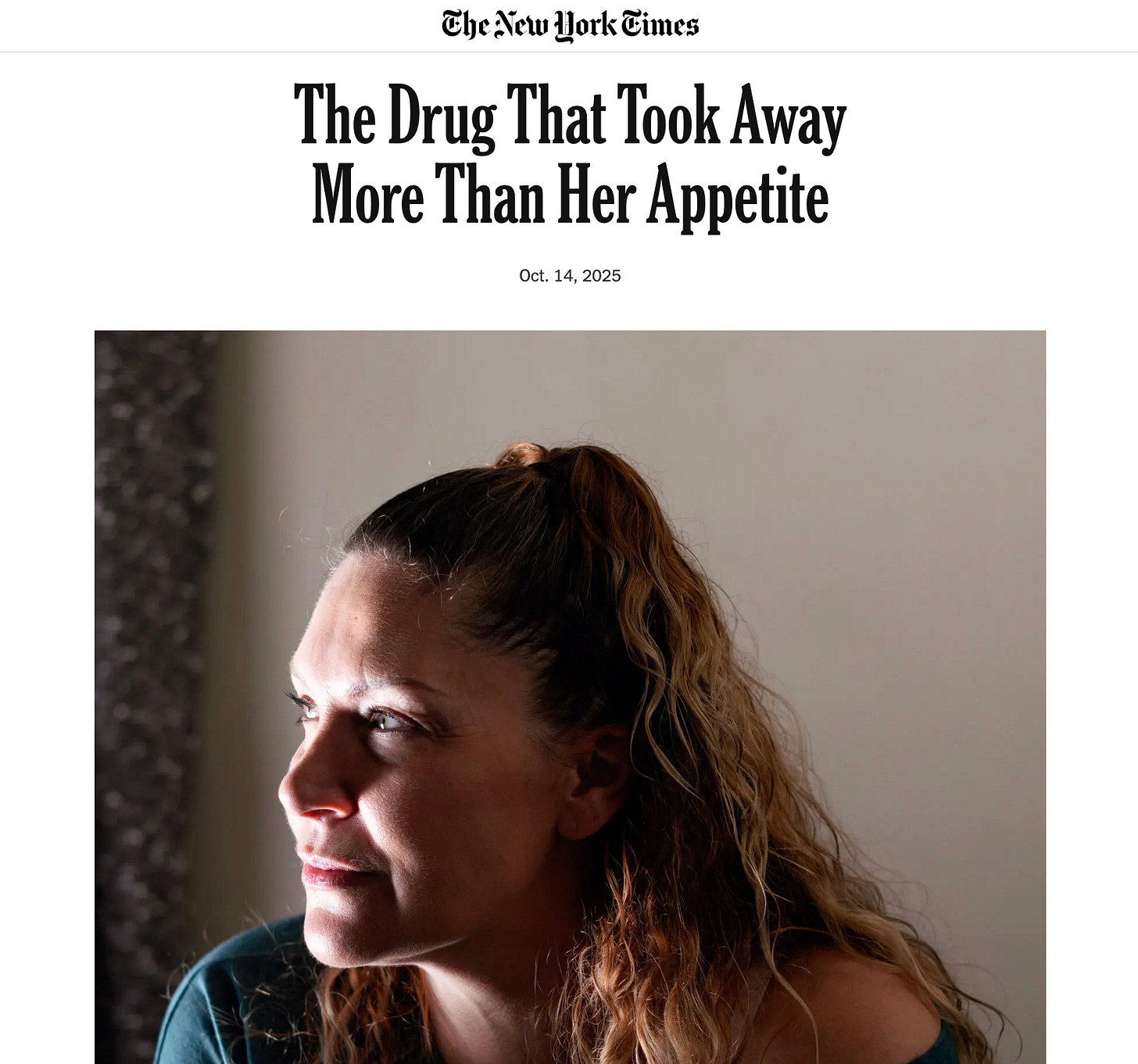NYTimes Covers Our GLP-1s for Post-Incarceration Women Program
"I used to have these dreams where I was using opiates and then I’d wake up and want them. I don’t have those anymore."
Maia Szalavitz has a great article in the New York Times today covering the Open Doors / CASPR program, SheThrives, which is offering GLP-1s to women with substance use disorder history who are in post-incarceration housing. We are very proud of the program, the team at OpenDoors, and the women who are participating.
One of those, Jessica Massarone, is the focus of the Times piece:
In May, she began taking a drug similar to Ozempic while living at Open Doors, a Rhode Island nonprofit for formerly incarcerated and homeless people. She gets the medication, called a GLP-1, free through a pilot program testing the weight loss and obesity drugs as a treatment for addiction. Fifteen patients have started on the medication so far.
The drug helped Ms. Massarone, who had also battled obesity, lose 17 pounds. Critically, it also allowed her to overcome drug cravings in situations that had once defeated her.
This video from OpenDoors features Dr. Steve Klein and Jessica, on the impact of GLP-1s on her cravings:
Nick Horton, who runs the program and has spent decades managing transitional housing, says, “In so many cases, we are out of tools when it comes to dealing with addiction, even when we offer every other resource we can. Now, this seems to be making a difference where we otherwise were out of options. The women in our recovery houses want to enroll in this treatment, are staying on the medication, and are saying it is helping them. That makes us feel more and more confident that this is not only worth doing, but that we and others need to explore this treatment more widely.”
“I’ve gotten stronger in my recovery—I used to have a pit in my stomach when I thought about drugs. I had drug dreams. Those are gone,” Jessica reported. Another patient in the program, Kaley, also described her drug dreams vanishing on GLP-1 treatment, “I stopped having drug dreams. It hadn’t even occurred to me until someone asked me about my cravings, but I used to have these dreams where I was using opiates and then I’d wake up and want them. I don’t have those anymore.”
OpenDoors and CASPR are currently seeking funding to expand this pilot program into a randomized trial.
A chance to dramatically reduce the number of women in prison
We are, of course, delighted that this effort is helping the women in the OpenDoors program, and the broader vision is to understand how next-generation addiction medicine can create new paths to stability for people exiting prison.
The downstream consequences of addictions are often even worse than the direct medical effects — families torn apart, crime, poverty, abuse, lost jobs, lost futures, orphaned children, and more. Addiction is one of the rare factors that is truly a root causes of so much suffering and alienation.
Consider:
Roughly half of reported crimes are related to drug or alcohol use or sale.
58% of women in state prison met DSM‑IV criteria for a substance use disorder in the previous 12 months (DOJ).
63% of women released from prison will be re-arrested within 5 years (DOJ).
Numbers are similar for men (slightly lower SUD rates but slightly higher re-arrest rates). Effective, maintainable addiction treatment that can begin during or just after prison will reduce crime, will vastly improve the lives of these women and men, and help protect the families and communities around them.
We already know that treating opioid use disorder in prison reduces rates of overdose when people are released. But many people with substance use disorders won’t accept methadone or buperenorphine treatment— after becoming sober from opioids in prison, they are often reluctant to begin an opioid agonist therapy. And for those with addictions to cocaine or methamphetamine, there are zero FDA approved treatments to offer.
In fact, only 3% of Americans with a substance use disorder currently receive medication to treat it, and you can’t make a lasting population-level impact at that level of adoption. GLP-1s can transform addiction treatment, in and out of prison, not just because they are effective, but because they are appealing. GLP-1s are extremely safe, easy to initiate, easy to self-dose, work across substances, are combinable with all existing SUD medications, and help people lose weight (which is highly motivating for adherence to treatment). Here’s more on GLP-1s and addiction.
To reach a broad population and get coverage from health care programs, GLP-1 medications need large scale clinical trials in substance use disorder indications; making that happen is one of our core missions at CASPR.
Finally, I want to thank the public and private donors to CASPR who have made it possible for us to develop and support programs like this. STAT also recently covered our GLP-1 program at Caron, which provides medication free of charge for an in-patient recovery program.



